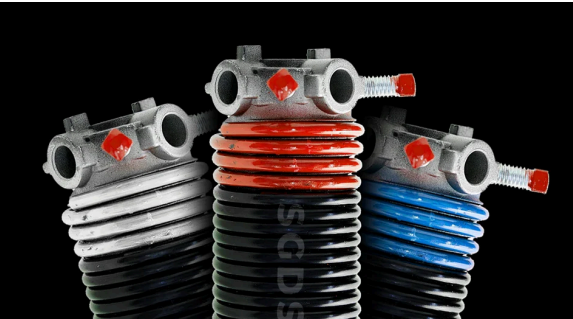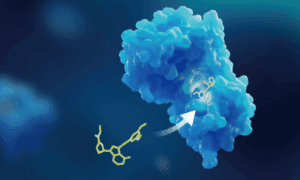Technology Is Reshaping Industrial Automation
The Fourth Industrial Revolution is blurring the lines between software intelligence and hardware mechanics. While cloud platforms, edge computing, and machine-learning algorithms grab headlines, the physical components that translate digital commands into motion often receive little attention. One of the most critical of these components is the humble spring. In factories, warehouses, logistics hubs, and even data centers, springs store energy, absorb
shock, ensure precise positioning, and keep automated systems running around the clock. SGD Springs, a Texas firm best known for high-cycle garage door torsion springs, is proving that legacy hardware can evolve alongside AI and robotics. The company leverages proprietary ASTM A229 carbon steel wire, advanced oil-quench tempering, and electrophoretic coating to deliver predictable performance in demanding environments. An equally important innovation is the firm’s approach to data driven manufacturing. By weaving real time sensor feedback into its production workflow, SGD Springs is closing the loop between raw material properties and field
performance.
Below, we look at four reasons why modern springs deserve space in discussions aboutIndustry 4.0, predictive maintenance, and sustainable supply chains.
1. From Metallurgy to Materials Science
Springs once relied on basic carbon steel with little insight into microstructure. Today’s top tier coils begin with vacuum-degassed wire that has a highly uniform grain. SGD Springs sources steel rod from domestic mills that share chemical composition documentation down to parts per million. The wire runs through digitally controlled drawing lines where laser micrometers verify diameter tolerances within a few microns.
After forming, the coils pass through an oil-tempered furnace profile that introduces compressiveresidual stress and lubricity. Sensors mounted inside the furnace measure atmosphere chemistry and adjust the oil bath temperature continuously, ensuring every batch achieves the same modulus of elasticity.
Finally, an electrophoretic coating gives the surface a flawless black skin that resists salt spray and acidic fumes better than conventional zinc plating. This coating is applied in a closed loop system that recycles over ninety percent of the paint bath, cutting volatile organic compounds and keeping the shop floor compliant with environmental regulations.
2. Digital Twins for Mechanical Parts
Predictive maintenance platforms rarely include digital twins of passive components such as springs. SGD Springs partnered with a Dallas AI startup to change that dynamic. Each production run now receives a QR code that links to a cloud instance containing the coil’s mechanical fingerprint: wire diameter, free length, mean coil diameter, residual stress level, and cycle life projection under various load curves.
When an integrator installs the spring inside a motorized assembly, the accompanying app lets technicians log installation torque, ambient temperature, and duty cycle thresholds. The cloud model then simulates wear in real time using a Bayesian fatigue algorithm. If stresses exceed safe margins, the system flags the part for replacement long before end users notice degraded performance.
This capability turns a low tech component into an active data point that facility managers can track inside a computerized maintenance management system. The result is fewer unplanned shutdowns and a smoother alignment between mechanical lifecycles and software updates.
3. Supply Chain Resilience through Regionalized Production
The pandemic era exposed the fragility of global logistics. Containers stacked at ports and volatile freight costs drove many manufacturers to reshuffle supplier lists. SGD Springs mitigated risk by betting on local steel, shorter transit distances, and vertically integrated processes. All coiling, tempering, and coating take place at the Carrollton campus, just minutes from two major interstate corridors and the Dallas Fort Worth logistics hub.
This regional footprint means lead times rarely exceed forty eight hours for in stock items and five business days for custom wound orders. Automation firms can prototype new end effector designs without waiting weeks for imports or paying premium rates for expedited air freight. The company also maintains a rolling safety stock of common wire diameters and attaches real time inventory dashboards to its customer portal, helping engineers match spring characteristics to load cases on the fly.
4. Sustainability Metrics Aligned with ESG Goals
Corporate sustainability managers increasingly audit not only direct emissions but also upstream Scope 3 impacts. Springs might appear minor compared with drives or hydraulic cylinders, yet coil production can involve energy intensive furnaces and harsh surface treatments. SGD Springs addressed this challenge by installing regenerative burners in its oil tempering ovens, trimming gas consumption by roughly twenty percent. The electrophoretic
paint line runs on renewable electricity purchased through a Texas power cooperative.
The company also publishes Environmental Product Declarations that quantify embodied carbon per kilogram of finished spring. Integrators in automotive and e-commerce robotics can now roll these numbers into the lifecycle assessments they submit to regulators and shareholders.
Cross Industry Applications
Automated Storage and Retrieval Systems: Precision springs keep shuttle cars balanced, ensuring rapid acceleration and deceleration without excessive motor wear. Collaborative Robots: End effector grippers often rely on torsion or compression springs to maintain consistent grasping force, preventing slippage in pick and place operations.
Electric Vehicle Manufacturing: Assembly jigs require repeatable clamping pressure; oil-tempered springs hold fixtures steady through heavy vibration.
Data Center Cooling Louvers: Temperature controlled airflow panels need springs that can open and close hundreds of times per day without losing torque.
With the growth of autonomous logistics and smart factories, demand for springs that integrate seamlessly with predictive analytics platforms will only expand.
Smart Sourcing Tips
When evaluating leaf spring manufacturers or torsion spring suppliers for industrial projects,
engineers should request the following:
1. Full chemical composition and mechanical test certifications for each wire batch.
2. Digital documentation on coil geometry and fatigue life.
3. Proof of electrophoretic or equivalent corrosion protection for humid or chemically harsh
environments.
4. Access to inventory APIs or portals that can plug into enterprise resource planning
systems.
5. Environmental Product Declarations for Scope 3 reporting.
Choosing components with transparent data trails streamlines both quality assurance and ESG
compliance.
Conclusion
Advanced springs may not feature in keynote speeches about artificial intelligence or edge computing, yet they stand at the intersection of mechanical reliability and digital transformation. Firms like SGD Springs show that by pairing state of the art metallurgy with cloud based analytics, even a coil of steel wire can become a smart asset. For automation architects seeking higher uptime, verified sustainability, and faster prototyping, the next generation of springs could be the hidden key to unlocking Industry 4.0 efficiency.
SGD Springs
1416 Westway Circle Carrollton, TX 75006
(888) 803-3313
sgdsprings.com



































